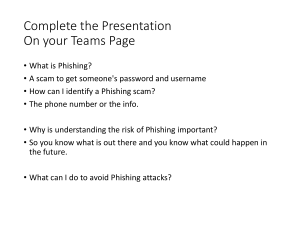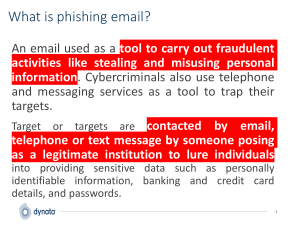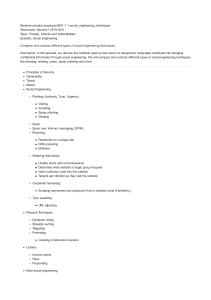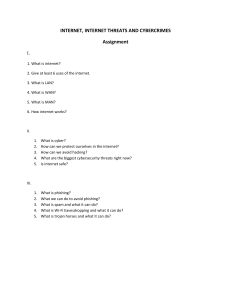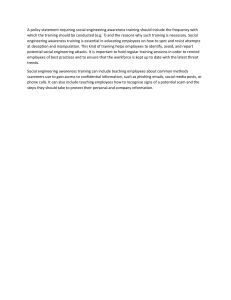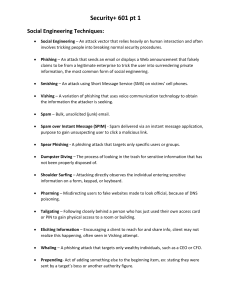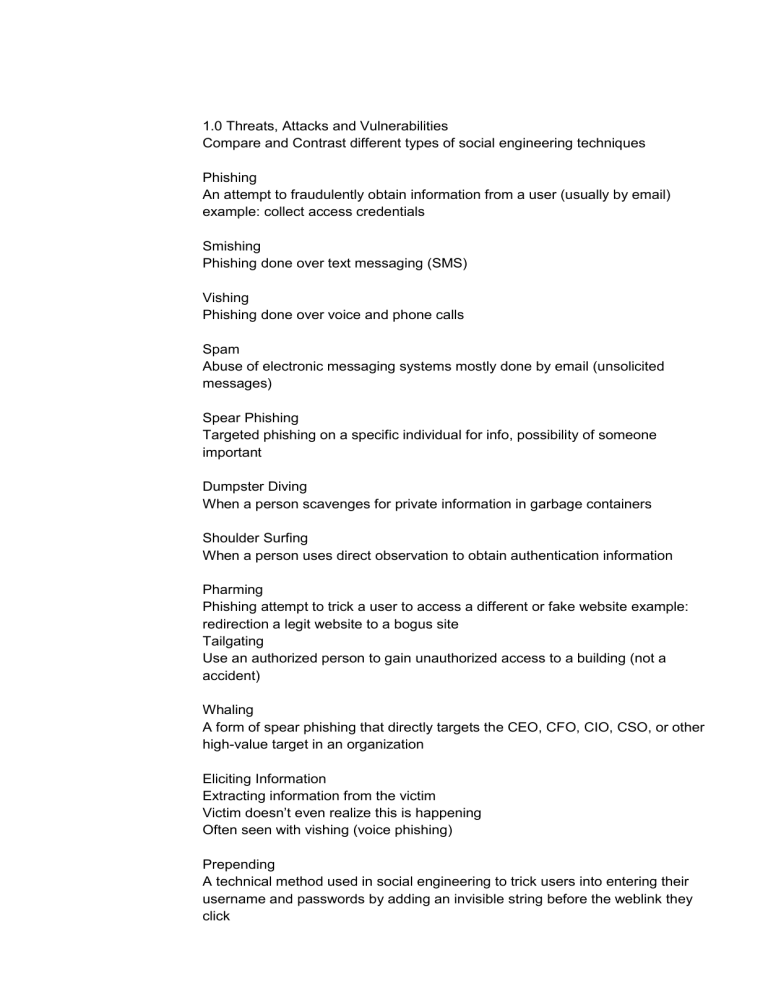
1.0 Threats, Attacks and Vulnerabilities Compare and Contrast different types of social engineering techniques Phishing An attempt to fraudulently obtain information from a user (usually by email) example: collect access credentials Smishing Phishing done over text messaging (SMS) Vishing Phishing done over voice and phone calls Spam Abuse of electronic messaging systems mostly done by email (unsolicited messages) Spear Phishing Targeted phishing on a specific individual for info, possibility of someone important Dumpster Diving When a person scavenges for private information in garbage containers Shoulder Surfing When a person uses direct observation to obtain authentication information Pharming Phishing attempt to trick a user to access a different or fake website example: redirection a legit website to a bogus site Tailgating Use an authorized person to gain unauthorized access to a building (not a accident) Whaling A form of spear phishing that directly targets the CEO, CFO, CIO, CSO, or other high-value target in an organization Eliciting Information Extracting information from the victim Victim doesn’t even realize this is happening Often seen with vishing (voice phishing) Prepending A technical method used in social engineering to trick users into entering their username and passwords by adding an invisible string before the weblink they click The prepended string (data:text) converts the link into a Data URI (or Data URL) that embeds small files inline of document Identity Fraud Identity theft involves stealing another person's identity and using it as your own Invoice Scam A scam in which a person is tricked into paying for a fake invoice for a service or product that they did not order Identity fraud and invoice scams are low-tech social engineering techniques Credential Harvesting Attackers collect login credentials (also called password harvesting) Reconnaissance The attacker determines what methods to use to complete the phases of the attack Hoax Attempt at deceiving people into believing that something is false when it is true (or vice versa) Impersonation Attackers pretend to be someone they aren’t Watering Hole Attack When an attacker figures out where users like to go, and places malware to gain access to your organization Typo Squatting Is a form of cybersquatting and possibly brandjacking which relies on mistakes such as typos made by the user when inputting a website address (URL hijacking or fake URL) Hybrid Warfare (Influence Campaigns) A military strategy which employs political warfare and blends conventional warfare, irregular warfare and cyberwarfare with other influencing methods, such as fake news, diplomacy,social media and foreign electoral intervention Principles (reasons for effectiveness) Authority: People are more willing to comply with a request when they think it is coming from someone in authority Intimidation: threatening a person into helping Consensus / social proof: convince based on what’s normally expected Scarcity: must make the change before time expires, urgency Familiarity: someone you know, we have common friends Trust: attacker wants to gain some level of trust with you
